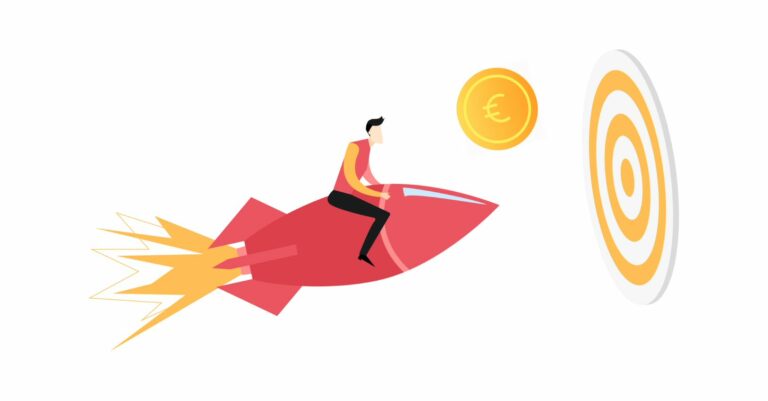
Why You Should Make Paying off High-Interest Debt Your Priority
Previously, we explored options on how an individual could optimise their expenses. Even looked at how that could be considered as a means of investment. Paying less money for a service than you’re contractually obliged to would most certainly fit under this statement. So, let’s dig in a bit deeper.
Millennia ago, the man with no sheep would ask to borrow a lamb from the man with many – in return offering a pair of lambs a year later. But, we’re far removed from the ages when your well-being was constricted to whether you knew a man with a flock of sheep. In fact when you consider how rapidly the world of financing has grown over even the last 100 years, it’s safe to assume that most of the people on this planet have access to some sort of personal financing tool. Regardless of where they live. Well, an internet connection and a bank account is still a must-have.
Herein lies the issue
Since loans have become so readily available, more and more people have at least one type of loan to their name. Credit cards, personal loans, mortgages – you name them. And truth be told – a loan in itself is not so bad. For most of us, it’s a means to acquire a home, an education, maybe even start a business.
However, it’s the returning of a loan that can become a detriment to your financial, mental and even physical well-being. Why? Because some loans are more demanding than others. Let’s explore what exactly makes one loan more demanding than the other.
APR and interest rates
It’s safe to assume that most of us no longer believe in fairy tales and/or benevolent philanthropy of banks and other types of lenders. Indeed, would you yourself lend a mob of strangers enormous sums of money without some benefit and or safety net for yourself? Didn’t think so.
Banks and non-bank lenders use various tools to assure that the money they lend out will not be lost. While checking your credit score would be one way to determine this probability, the lender still has to worry about two things:
- that you don’t make this loan the first one you don’t return;
- that the lender earns something on top of the original amount lent out.
This is achieved by interest rates and annual percentage rates (APR). Interest rate is the amount you pay yearly for the use of the loan. APR is the interest rate plus all other charges upon your loan – fees, loan insurance etc.
All of this seems regular. So, what’s the problem?
Well, generally, there shouldn’t be any issue with paying interest for a service. Especially one you need dearly. BUT, interest rates vary. Due to your credit score, the loan type and, actually, the country you reside in, among other reasons. In Europe interest rates for personal loans can vary from as low as 2% in some countries to as high as 20% in others.
If you’re in your late 20s or older, there’s a good chance you have experience with borrowing. In fact you are likely to have multiple loans between the age of 25 and 50. These include student loans, credit cards, personal loans, car leases and mortgages. Out of the aforementioned, credit cards and personal loans tend to have higher interest rates and APR.
For instance, say you have a credit card with €3000 balance, a personal loan of €4500 and a student loan of €6500. Just by looking at the total amount owed, you’d want to eliminate the student debt sooner than the other loans. Yet, the student loan only has an APR of ~4.5%, whereas the APR for the personal loan is 14% and 20% for the credit card.
It is especially important to note that the credit card loan is something called a revolving loan. This means that a creditor has made funds available to you, and you can use them for an unlimited amount of time. As soon as you have repaid at least a part of the loan, it is made available to you once again. This sort of loan can be very expensive if you never repay it fully, because of the total APR you pay while using the loan.
Some lenders structure their personal loans in a way that the first portion of scheduled monthly instalments is interest-heavy. This means that once you start repaying your loan, initially your payments will mostly go to cover the lender’s interest. Lenders do this both for loan security and profit.
When you take all aforementioned in account, there are clear-cut reasons why you should absolutely repay the high-interest loans back first:
- High-interest loans tend to be interest-heavy in their initial monthly instalments. But you can reduce the amount of interest you pay by making additional monthly payments towards the principal loan amount.
- Revolving loans like credit cards charge interest while you use them. Meaning – as long as you don’t repay the loan completely, you will continue paying a high-interest rate.
- The credit card interest rate is charged towards the amount owed. The sooner you reduce the principal loan amount, the less interest you will continue to pay.
- Unless you specifically need to reduce the total loan amount you have, where you might want to repay the lower interest-higher principal amount loan first (which is sometimes necessary to receive a mortgage, for example), treat repaying your high-interest loans as a means of investing in your financial freedom.
In conclusion
Pay close attention to the payment structure of the loan you’re choosing. If possible – only choose the options that have reasonable interest rates and APR. Prioritize repaying the high-interest loans as quickly as possible, thus making extra funds available for repaying other loans and expenditures (this method is actually called the avalanche method, but that’s a topic for next time).
